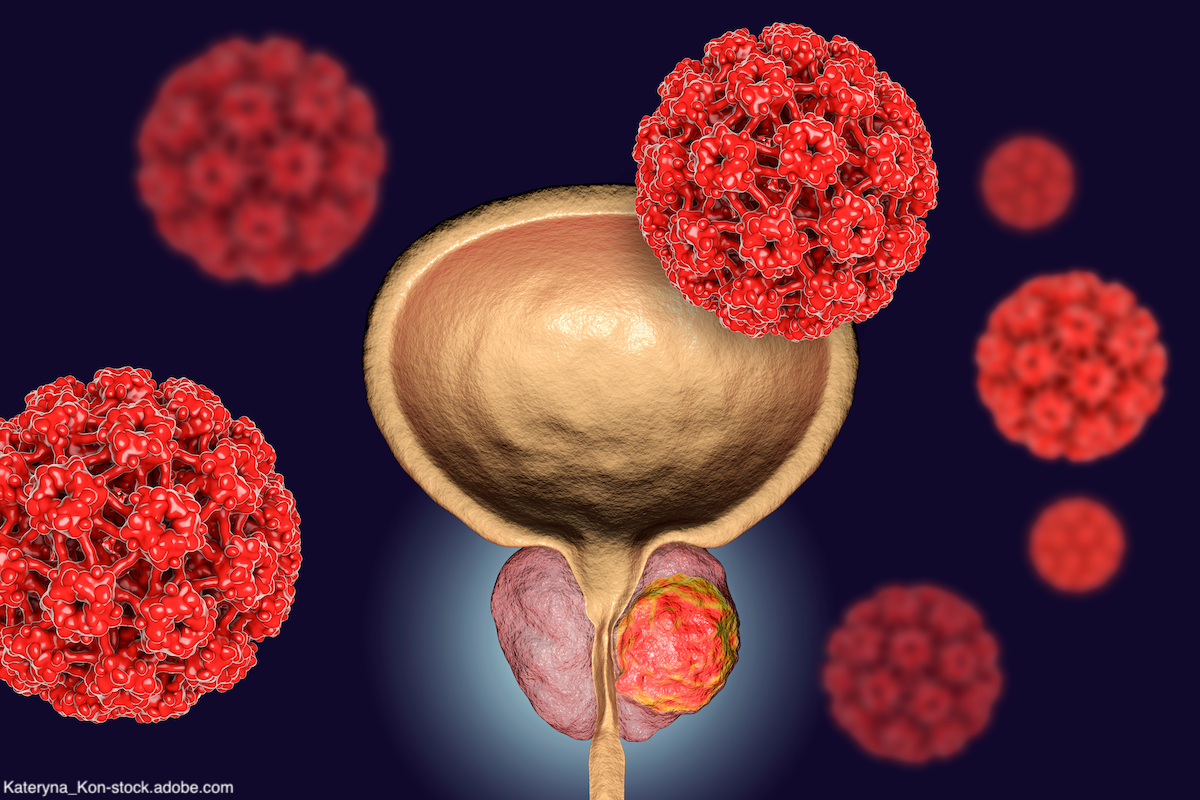Publication
Article
Urology Times Journal
The role of guidelines in the management of intermediate-risk NMIBC
Author(s):
"Patients with intermediate-risk NMIBC remain an incredibly heterogeneous group," says Wei Shen Tan, MD, PhD.
Last year, the International Bladder Cancer Group (IBCG) released an updated consensus definition and management recommendations in intermediate-risk non–muscle-invasive bladder cancer.1 In this interview, Ashish M. Kamat, MD, MBBS; Roger Li, MD; and Wei Shen Tan, MD, PhD, discuss the update, the role of guidelines in the management of non–muscle-invasive bladder cancer (NMIBC), and look at new and forthcoming therapies in the space. Kamat is an Endowed Professor of Urologic Oncology (Surgery) and Cancer Research at the University of Texas MD Anderson Cancer Center in Houston. He is also president of the IBCG and International Bladder Cancer Network (IBCN). Li is a genitourinary oncologist at Moffitt Cancer Center in Tampa, Florida. Tan is a Society of Urologic Oncology fellow at the University of Texas MD Anderson Cancer Center.
What is the role of guidelines in the management of non–muscle-invasive bladder cancer?
Ashish M. Kamat, MD, MBBS, says, "One of the mission statements of the IBCG is to distill evidence-based medicine and then create recommendations and guidelines that can be used globally, not just in select countries or populations."

Kamat: The key here is that these are guidelines. With any of the recommendations and guidelines put out by organizations such as the American Urological Association (AUA), the European Association of Urology (EAU), the IBCG, etc, we try to put forward a framework for urologists, medical oncologists, and radiation oncologists to follow. They truly are guidelines—to guide people in the right direction.
Roger Li, MD, says, "Because there is such a huge variety of non–muscle-invasive bladder cancer, and there's such heterogeneity in the presentation and also in the clinical outcomes, it's very important to have a set of guidelines for the general direction of the management of these patients."

Li: I definitely agree. Because there is such a huge variety of non–muscle-invasive bladder cancer, and there's such heterogeneity in the presentation and also in the clinical outcomes, it's very important to have a set of guidelines for the general direction of the management of these patients. But ultimately, with these guidelines, there are still a lot of different variables that are uncaptured. It's still up to the clinician to base their management strategies on their experience and what is available for the patient.
Kamat: Dr Tan, is this what you've experienced in the UK as well?
Wei Shen Tan, MD, says, "From a UK perspective, where I used to practice, intermediate-risk NMIBC patients are traditionally treated with adjuvant intravesical chemotherapy without maintenance treatment."

Tan: I believe guidelines are important to provide recommendations and standardization of treatment based on an evidence-based approach for practicing urologists. In the UK, most new bladder cancer diagnosis as well as patients being considered for radical treatment are discussed at a multidisciplinary meeting which provides a consensus view regarding treatment options.
Could you discuss the updated consensus definition and management recommendations from the IBCG?
Kamat: One of the mission statements of the IBCG is to distill evidence-based medicine and then create recommendations and guidelines that can be used globally, not just in select countries or populations. One of the huge unmet needs we found was the management of patients with intermediate-risk bladder cancer; which includes, for the most part, patients who have recurring or multifocal or large low-grade bladder tumors. Back in 2014, the IBCG formulated guidelines for management and for clinical trial design that were adopted by some to help guide certain clinical trials. Since several years had elapsed, we decided to update those recommendations. I'll let Dr Tan talk about what exactly he did and how the guideline updates came about.
Tan: Just to elaborate on what Dr. Kamat has mentioned, this represents an updated version of the IBCG intermediate risk NMIBC guidelines published in 2014. Patients with intermediate-risk NMIBC remain an incredibly heterogeneous group. It's sort of the gray zone between low risk and high-risk disease. We attempted to provide a guidance to stratify risk, which we believe is useful because intermediate risk disease represents a spectrum of disease, where a subgroup of patients that act more like low-risk and a subgroup would share more similarities with high risk disease. In the review we recommended a tailored approach for the treatment and management for these patients. We reviewed the literature and then subdivided patients with intermediate-risk disease according to different risk factors. We identified 5 different risk factors, and grouped patients to 0 risk factors, 1-2 risk factors, and ≥3 risk factors. These risk factors include multifocality, the size of the tumor, how frequent recurrence happened, when the last recurrence occurred, and whether patients previously received adjuvant intravesical treatment. We then validated these subgroups using the European Organisation of Research and Treatment of Cancer 2006 nomogram. There are ongoing efforts to further validate these subgroups in other patient cohorts, but essentially, the more risk factors that you have, and based on the subgroups, the higher the risk of disease recurrence and progression. We hope that this will be a useful framework for further clinical trial design and to guide the management of intermediate-risk NMIBC.
Li: I'd like to expound on Dr Tan's last point. I think, because of the evolution of the definition of intermediate-risk non–muscle-invasive disease, there have been many clinical trials previously that have incorporated different definitions for this disease entity. The IBCG's comprehensive overview and summary of all of the clinical trials designs and outcomes have served to inform expected efficacy rates, the efficacy of different strategies of administering intravesical chemotherapy or BCG in these patients, and really sets the stage for the next generation of clinical trials. With many of the different therapeutic agents moving towards this space, I think it's incredibly important for us to precisely define not only the patient population, but also the risk factors and how these patients should be treated, along with some of the expected recurrence and progression rates that we're seeing with traditional therapies, to inform future clinical trial design.
How do the guidelines differ when it comes to intermediate-risk non–muscle-invasive bladder cancer?
Kamat: The definition of intermediate-risk bladder cancer is something that's not agreed upon even by urologists that have been in the field for many, many years. Part of the reason is the way the guidelines distribute the patients with their tumors, the stage, and the grading.If you consider the first-time solitary, small, low-grade tumors, most guidelines agree that those are low-risk tumors. Most guidelines also agree that high-grade tumors, which includes T1 and carcinoma in situ (CIS), and large Ta tumors should be in the high-risk category. Everything else falls in the intermediate-risk category. That's a simplified version that's easy to recognize and practice, and that's what the IBCG recommends – with the caveat that all high grade Ta tumors should be treated as high risk. Now, some groups, such as the AUA, have considered smaller Ta high-grade tumors to be intermediate risk. The EAU has introduced complex system that factors in age, size, etc. and under this classification some T1 tumors and TaHG tumors might fall in an intermediate-risk category. This confuses the matter, and it makes it hard for practitioners that may not be doing bladder cancer 24/7 to understand how to treat patients. For that reason, the IBCG recommends that anybody that has high-grade disease should be considered high risk, and anyone that's not low risk falls in the intermediate-risk category. Since the intermediate risk category is still a large number of patients, we further recommend sub-grouping these patients based on risk factors to avoid both over-treatment and under-treatment. That's where the work that has come out in the recent publication is, we hope, very helpful to help guide the treatment of patients.
Li: I think that captures a lot of the heterogeneity within the different guidelines. I would just like to add that in practice, we really try to simplify things as much as possible. I usually look at the patient's grading on transurethral resection of the bladder tumor and use that as the essential guide on classifying patients as having high-risk disease. And then for low risk vs intermediate risk, I look at their recurrence pattern and some of the clinical features such as size and multiplicity. So even though there's a lot of heterogeneity within the guidelines, I think in practice, when we're seeing a lot of patients day in and day out, having a simplified guideline really helps us to streamline our clinical practice.
Tan: From a UK perspective, where I used to practice, intermediate-risk NMIBC patients are traditionally treated with adjuvant intravesical chemotherapy without maintenance treatment. Whereas in the US, typically, BCG is used in the absence of BCG shortages. I feel that the IBCG risk stratification provides some evidence to support treating the ‘higher risk’ intermediate-risk group with BCG, the lower risk factor group of intermediate-risk patients with intravesical chemotherapy and those with no risk factors can avoid adjuvant treatment all together.
Kamat: Ultimately, it's all about getting the patients the right treatment—neither overtreatment nor undertreatment is helpful to our patients. That's the whole goal behind trying to clarify the intermediate-risk category.
Is there agreement on high-risk disease?
Kamat: For the most part, yes, if a patient is high grade, most people consider that patient to be high risk. The only place where there's a little bit of a nuance is the small high-grade Ta tumors that fall under 3 cm. However, we as a group feel that this size cut off is rather artibrary and is actually an oversimplification s because if you askdifferent urologists to estimate the size of a tumor, they're seldome going to agree. It's hard to know if any tumor is really 2.9 cm or 3.1 cm, which changes the classification for the patient and in some cases may change the treatment dramatically. I think that's just a very arbitrary line in the sand. Dr Tan, is the 3-cm cutoff used in the United Kingdom?
Tan: Based on the UK National Institute for Health and Care Excellence (NICE) guidelines, which are widely used in the UK, as well as the EAU guidelines with the exception of some nuances, any high-grade disease would be considered high risk, so I don't really have a problem with that.
Li: I completely agree with Dr Kamat that the sizing estimate is very urologist dependent. I would also like to add that, because of the switching of the grading system from the 3-tiered to the 2-tiered system, in my opinion, there is a lot of overgrading that's happening where what previously was called grade 2 disease is now being called high grade. Typically for these patients, on cystoscopic evaluation, their tumor appears to be low grade, but because of their high grade classification, they're being treated as higher grade. Sometimes, I factor that into my clinical practice as well, especially in the age of BCG shortages, to not necessarily give those patients intravesical BCG treatment, but rather chemotherapy.
How can these various guidelines be refined and simplified for the clinician in a user-friendly fashion?
Kamat: The guidelines are only as useful as how they get used. Having complicated guidelines that require the practitioner to pull out a calculator or an app every time they see a patient means that they seldom get used. When it comes to something like risk stratification it really is important to make things simple - and then leave the nuances for further refinement. That's the goal of the IBCG recommendations for intermediate risk-bladder cancer. Now, of course, in the manuscript, we also do a deep dive into that bucket of patients with intermediate-risk bladder cancer and suggest score to sub- stratify patients to improve the design of clinical trials and the outcomes measurements. This is so that you don't have a huge trial that is unknowingly biased toward a very low recurrence rate or, conversely, a very high progression rate, which then doesn't balance out. For clinical practice, simple is best—that allows patients to get the appropriate treatment the majority of the time. For clinical trial design however, while you don't need to be too complicated, you need to be rather strict in the power calculations.That was the whole genesis behind this recommendation system scoring.
Tan: I can't stress enough how important it is for guidelines to be simple and straightforward. If we want wide adoption, easy-to-use guidelines are very important. Where guidelines differ is mainly based on the characterization of intermediate risk. In terms of the treatments, there are some nuances; however, at this point, we only have chemotherapy and BCG. There are a lot of other agents that are being investigated in the higher risk population that are being brought forward to the intermediate-risk setting.
What is coming in terms of new treatments for intermediate-risk NMIBC?
Li: There are several different broad treatment strategies. One is chemotherapeutic agents that can be used in this space, optimizing on the contact time of the agent or administered with the tumor left in situ. Urogen is the prime example for that, with their product being a gel that's delivered intravesically with increased contact time between the therapeutic agent and the tumor itself. Then there are also immunogenic agents such as CG0070. This is an oncolytic virus that's currently being tested in the BCG-unresponsive space, but is also looking to go into the intermediate-risk disease space to test this efficacy against recurrent low-grade tumors. There has been a lot of interest being shown in testing nadofaragene firadenovec [Adstiladrin], which was recently approved by the FDA for treating BCG-unresponsive CIS, in the intermediate-risk disease space. Finally, targeted agents such as FGFR3 inhibitors, both administered systemically as an oral agent or through an intravesical pretzel-shaped device that can have a prolonged delivery timeline, are also being tested in this space.
Kamat: As Dr. Li mentioned, it's about taking existing therapeutics and improving their delivery or identifying novel therapeutics entirely. cs. Novel therapeutics could be immune modulators, either gene therapy or otherwise, or it could be targeted therapies. When it comes to actually delivering chemotherapy in an enhanced fashion, there are many modailites available such as gel formulation, delivery devices such as the ‘pretzel’, radiofrequency heating etc. Dr Tan has published on chemohypothermia, which is not available in the US but is available in many parts of the world.
Tan: In the UK, we carried out the HIVEC-II trial, which is a multicenter, randomized trial of intermediate-risk patients comparing chemohyperthermia with mitomycin C vs standard room temperature mitomycin C. The treatment time was 60 minutes in each arm. Unfortunately, we didn't report a difference in efficacy between the 2 treatment arms, suggesting that chemohypothermia is not effective over standard intravesical chemotherapy in the intermediate-risk patient group. Subsequently, our Spanish contemporaries have also published HIVEC-I, another multicenter randomized trial reporting similar results. While not used in the USA, hyperthermia has been widely used in Europe and the UK, and recent evidence suggest that it is not quite as effective as what we presumed in the intermediate-risk cohort. One of the lessons that we learned from this study is that identifying a primary end point in the intermediate-risk group of patients can be quite tricky. While recurrence is common in this patient cohort, often these recurrence do not pose a threat to patients’ life and the risk of disease progression is often low. Hence, future trials should consider other endpoints as well that incorporates patient reported outcome measures.
Is there anything else you would like to add?
Kamat: The guidelines that are put forward by the IBCG for the intermediate-risk group of patients is meant to serve 2 purposes: first, to help clinicians provide our patients with the best, appropriate treatment, and second, to help those developing clinical trials to enrich the trial with the appropriate patient population so as to have the ideal trial size for the appropriate end point. This is to avoid t a huge expenditure of time, money, and patients for trials that then read out with results that we can't interpret.
Tan: I agree with Dr Kamat that it's important to have simple-to-use, straightforward guidelines for widespread adoption.
Li: I would just like to say that the IBCG, along with the guidance that it's provided in the past in many different disease spaces, is once again showing the way on how to conduct clinical trials in this disease space. There's renewed enthusiasm for conducting trials in the intermediate risk NMIBC space. I think it's incredibly important for us to summarize everything that we've learned in the past, like we did within the guidance paper, to inform the field on how to best conduct these clinical trials.
Reference
1. Tan WS, Steinberg G, Witjes JA, et al. Intermediate-risk non-muscle-invasive bladder cancer: updated consensus definition and management recommendations from the international bladder cancer group. Eur Urol Oncol. 2022;5(5):505-516. doi:10.1016/j.euo.2022.05.005

Newsletter
Stay current with the latest urology news and practice-changing insights — sign up now for the essential updates every urologist needs.



























